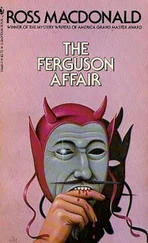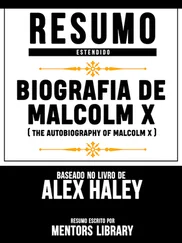Ferguson, Alex - Alex Ferguson My Autobiography
Здесь есть возможность читать онлайн «Ferguson, Alex - Alex Ferguson My Autobiography» весь текст электронной книги совершенно бесплатно (целиком полную версию без сокращений). В некоторых случаях можно слушать аудио, скачать через торрент в формате fb2 и присутствует краткое содержание. Год выпуска: 2013, Издательство: Hodder & Stoughton, Жанр: Старинная литература, на английском языке. Описание произведения, (предисловие) а так же отзывы посетителей доступны на портале библиотеки ЛибКат.
- Название:Alex Ferguson My Autobiography
- Автор:
- Издательство:Hodder & Stoughton
- Жанр:
- Год:2013
- ISBN:нет данных
- Рейтинг книги:3.67 / 5. Голосов: 3
-
Избранное:Добавить в избранное
- Отзывы:
-
Ваша оценка:
- 80
- 1
- 2
- 3
- 4
- 5
Alex Ferguson My Autobiography: краткое содержание, описание и аннотация
Предлагаем к чтению аннотацию, описание, краткое содержание или предисловие (зависит от того, что написал сам автор книги «Alex Ferguson My Autobiography»). Если вы не нашли необходимую информацию о книге — напишите в комментариях, мы постараемся отыскать её.
Alex Ferguson My Autobiography — читать онлайн бесплатно полную книгу (весь текст) целиком
Ниже представлен текст книги, разбитый по страницам. Система сохранения места последней прочитанной страницы, позволяет с удобством читать онлайн бесплатно книгу «Alex Ferguson My Autobiography», без необходимости каждый раз заново искать на чём Вы остановились. Поставьте закладку, и сможете в любой момент перейти на страницу, на которой закончили чтение.
Интервал:
Закладка:
At that stage we were considering an appeal, but it was obvious we had no chance of winning. I could never understand that a missed drug test was treated as seriously as a failed one. If you admit to being a drug taker, you are rehabilitated. We felt that the player was telling the truth, whereas the system assumed he was not. Nor did we like the fact that information seemed to be leaking to the press from the FA. In our view the confidentiality principle was being breached.
I told the hearing at Bolton that Rio would be in my team to play Spurs that weekend, regardless of the outcome. He played alongside Mikaël Silvestre in a 2–1 win at White Hart Lane. In his last game for eight months, Rio started in our 1–0 defeat at Wolves on 17 January 2004, but came off injured after 50 minutes. Wes Brown took his place. Kenny Miller scored the only goal of the game.
I felt stricken to have lost him for so long. Our relationship started, in a sense, long before I made him the most expensive signing in English football. I was very friendly with Mel Machin, who called me from Bournemouth in 1997 to say he had a boy on loan from West Ham. ‘Go and buy him,’ Mel said.
‘What’s his name?’
‘Rio Ferdinand.’
I knew that name from England youth teams. Mel was insistent. Mel, of course, was close to Harry Redknapp, then manager of West Ham, where Rio had been nurtured, so I was sure his judgment was based on solid information. I raised the subject of this young Bournemouth loanee with Martin Edwards. We had him watched at Bournemouth and made a note of his attributes: graceful, balanced, first touch like a centre-forward. Then we checked his background. Martin called the West Ham chairman, Terry Brown, who said: ‘Give us a million plus David Beckham.’ In other words: he’s not for sale.
At that time, Jaap Stam and Ronny Johnsen were ensconced in the heart of our defence and Wes Brown was emerging as a young centre-half of promise. In the event, Rio was transferred to Leeds for £18 million. In his first game for our Yorkshire rivals, he played in a back three against Leicester City and was annihilated. Watching that match I felt a surge of relief, which I laugh about now. Thank God we didn’t buy him. He was all over the place. But, needless to say, he developed exceptionally well.
Centre-backs were the foundation of my Manchester United sides. Always centre-backs. I looked for stability and consistency. Take Steve Bruce and Gary Pallister: until I found those two we were without a prayer. Paul McGrath was constantly injured; Kevin Moran always had split heads. He was like a punch-drunk boxer by the time I became his manager. I went to a game in Norway, where Ron Yeats was present in his capacity as chief scout for Liverpool.
‘I saw your old player at Blackburn last week. Kevin Moran,’ said Ron over a drink. I asked: ‘How did he do?’
Answer: ‘He lasted about 15 minutes. Got taken off with a split head.’
‘Not unusual, that,’ I said.
Graeme Hogg, meanwhile, had not reached the standard we required. So I always told my chairmen, ‘We need centre-backs who will play every week. They give you the steadiness and consistency and continuity.’ That led us to Bruce and Pallister, who played forever and never seemed to be injured. I remember one Friday before we played Liverpool, Bruce hobbling around The Cliff rubbing his hamstring and saying, ‘Don’t pick your team yet.’ He had injured it the previous weekend. I liked to set out my team on the Friday so we could practise set pieces and so on. ‘What are you on about?’ I said.
‘I’ll be all right,’ says Steve.
‘Don’t be so stupid,’ I say.
So he starts running around The Cliff. He jogs round the pitch twice. ‘I’m all right,’ he says. He’s only facing Ian Rush and John Aldridge for Liverpool. Meanwhile he can’t stop rubbing his hamstring. Bruce played right through that game. He and Pally were marvellous. Stam brought us the same toughness and reliability. Look, too, at the partnership between Ferdinand and Vidić. Brilliant, solid, nothing given away. Consider Manchester United teams from that whole era and the centre-backs were always a feature.
So buying Ferdinand in July 2002 conformed to my sacred team-building policy of strength in the middle. We paid a lot, but when you spread that kind of transfer fee for a centre-half over 10 or 12 years, it starts to look like a bargain. You can fritter away plenty of money on contenders who simply aren’t good enough. Better to spend more on a single player of unquestionable class.
We paid £3.75 million for Roy Keane, which was a transfer record at the time, but we had 11 years out of Roy. In my time at United I sold a lot of players people might not be familiar with: young reserve players and so on. On a cruise round the west of Scotland at the end of my last season, I worked out that I had spent an average of less than £5 million a season over my time at Man United.
I told Rio straight away when he joined, ‘You’re a big, casual sod.’
He said: ‘I can’t help it.’
‘You’ll need to help it. Because it’ll cost you goals, and I’ll be on your back,’ I said.
And he was casual. Sometimes he would glide along in second or third gear, then take off like a sports car. I had never seen a big lad of 6 feet 2 inches possess such an impressive change of pace. With time his concentration improved, and the expectations he placed on himself rose, along with the degree of responsibility he was willing to take on in the team and around the club. He became the complete footballer.
When you acquire a young player, you don’t get the complete package on purchase day. There’s work to be done. If Rio was going to switch off in a game it would be against one of the lesser teams that he didn’t regard as a major threat. The bigger the game, the more he liked it.
With Gary Neville beginning to pick up injuries, and Vidić and Evra settling in, Rio and Edwin van der Sar became the defensive fulcrum of the team in the second half of that decade. I played Rio once in the centre of midfield, in 2006 against Blackburn Rovers, and he got himself sent off. Robbie Savage was the victim of the tackle that put Rio back in the changing room.
This may surprise some, but Pallister was as good a footballer as Rio. Oddly, he was quicker, too, but he was no fan of running. Pally was anti-work, and I say that affectionately. He used to say that the less he did, the better he felt. He was the world’s worst trainer. I was always after him. In the first 15 minutes he would stagger out of our penalty area after an opposition attack, gasping for air. I would say to Brian Kidd: ‘Look at that Pally – he’s dying!’ I confess I used to slaughter him.
Picking him up one night for a club dinner, I entered his house to find a giant bottle of Coca-Cola on his fireside table and a big bag of sweets: Crunchies, Rolos, Mars Bars. I said to Mary, his wife, ‘What about this?’
‘I don’t know how many times I tell him, boss, he doesn’t listen,’ Mary said.
So we hear footsteps on the stairs and Pally descends to see me studying this vast stash of kiddie food. ‘Why do you buy all that stuff, Mary?’ he says to his wife. So I fire back: ‘You big lazy so-and-so, I’m fining you for that!’
Gary was no Adonis but he was a seriously good player with a sweet nature. A lovely lad. Like Rio, he could pass a ball and was quick when he wanted to be. In his last season with us, he sustained a cut on his eyebrow and was howling, complaining that it was the first time he had been cut in his life. It didn’t go with his image. Pally thought he was Cary Grant.
I wasn’t consciously looking for a centre-back who could carry the ball out of defence, or send an incisive pass like Franz Beckenbauer. Pace, and the ability to read the game, are non-negotiables at the top in modern football. Rio had both, which is why I signed him. Not only could he defend, but he could bring the ball out. So although defending came first with me, it was encouraging to know my new centre-back could also start moves from the back, which became the norm later, with Barcelona and others.
Читать дальшеИнтервал:
Закладка:
Похожие книги на «Alex Ferguson My Autobiography»
Представляем Вашему вниманию похожие книги на «Alex Ferguson My Autobiography» списком для выбора. Мы отобрали схожую по названию и смыслу литературу в надежде предоставить читателям больше вариантов отыскать новые, интересные, ещё непрочитанные произведения.
Обсуждение, отзывы о книге «Alex Ferguson My Autobiography» и просто собственные мнения читателей. Оставьте ваши комментарии, напишите, что Вы думаете о произведении, его смысле или главных героях. Укажите что конкретно понравилось, а что нет, и почему Вы так считаете.











